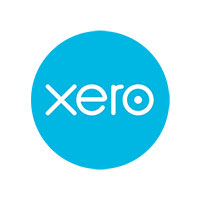
With all the focus on the drama of Brexit, it is easy to forget that we are fast approaching the end of another tax year. If you have not already done so this is the time to review your financial and tax affairs and consider if any action needs to be taken by 5 April 2019.
In this and the next few articles we outline a few areas for consideration. In this article we consider some of the ‘cliff edge’ or ‘tipping points’ and planning within the family.
Cliff edge
When your total income reaches certain thresholds, it tips any extra income into a tax band where a higher rate of tax is charged. This can also mean you lose part or all of your Savings Allowance, Child Benefit, Personal Allowance, or pension annual allowance.
You may be able to save tax by moving income from 2018/19 to 2019/20, or by making certain payments in 2018/19 rather than in 2019/20.
Say you are a 20% taxpayer in 2018/19, but expect that a bonus due in March 2019 will tip you into the 40% band (over £46,350). If you ask your employer to delay paying the bonus until after 5 April 2019, you’ll pay the tax on that income later. You will also retain all your £1,000 Savings Allowance, and may still stay out of the 40% band for 2019/20, as the threshold for that year will be £50,000. The main thresholds are (2018/19 figure first, then 2019/20):
- basic Personal Allowance: £11,850 (£12,500) – basic rate tax (20%) starts
- higher rate threshold: £46,350 (£50,000) – 20% rate increases to 40% and Savings Allowance reduces from £1,000 to £500
- married couples allowance: transfer of 10% of Personal Allowance is possible where the higher earner has income of no more than £46,350 (£50,000)
- Child Benefit clawback: income between £50,000 and £60,000 (no change for 2019/20)
- withdrawal of Personal Allowance: income between £100,000 and £123,700 (£125,000 in 2019/20)
- additional rate: income above £150,000 – 40% rate increases to 45% (no change for 2019/20), Savings Allowance removed, and pension annual allowance reduced
Note, the thresholds quoted above don’t apply to taxpayers who live in Scotland, as the Income Tax rates in Scotland are different to those that apply in the rest of the UK. However, the principle is the same.
Gift Aid donations and pension contributions can increase the value of most of the above thresholds. You can elect for Gift Aid donations to be treated as being paid in the preceding year.
Income that can easily be moved from year to year includes:
- bonus from your own company
- dividends from your company
- encashments of life assurance bonds
- withdrawal of taxable income from pension schemes in ‘drawdown’.
Family planning
In the UK, everyone is taxed as an individual, but social security benefits, including Tax Credits and Universal Credit, are awarded on the basis of the family’s total income. Child Benefit is also withdrawn based on the income of the higher earner of a couple, irrespective of who claimed it.
Families with an unequal distribution of income will often pay more tax than couples who earn just enough each to cover their basic Personal Allowance (£11,850 for 2017/18) and the basic rate band. The thresholds for restricting Child Benefit (£50,000), Personal Allowance (£100,000) and pension annual allowance (£150,000) all operate for the individual, so disadvantage families where the income is concentrated in one person’s hands.
Consider the Browns – they have two children and claim Child Benefit. In 2018/19 George Brown earns £88,000 and pays higher rate tax, but Sally Brown has no income. Because George’s income is over £60,000, the family’s Child Benefit is clawed back from him as a tax charge.
In contrast, John and Joy Green each earn £44,000, so they keep their Child Benefit, and pay less Income Tax as their highest marginal tax rate is 20%. Both Greens make use of their full Personal Allowance and most of their basic rate band.
Roger and Rose are in a worse tax position. Roger’s total income is £160,000 and his employer contributes £40,000 into his pension scheme. Roger and Rose have no effective Personal Allowances, as Rose has no income to set her allowance against, and Roger’s Personal Allowance is entirely withdrawn as his income exceeds £123,700.
Roger is treated as having income of £200,000 (£160,000 + 40,000) for pension relief purposes. His pension annual allowance is therefore reduced to £15,000, so he suffers an annual allowance charge at 45% on £25,000 of pension contribution.
These examples show that it makes sense to transfer some income from the higher earner to the lower earner in order to take advantage of the Personal Allowance and lower tax bands, and to avoid the clawback of allowances. This is not always easy to do, but the following methods are possible:
- an outright gift of savings and investments which produce taxable income
- putting savings and investments into joint names and sharing the income
- employing the spouse or partner in a business
- taking the spouse or partner into partnership
HMRC can challenge some of these if they think the transfer is not genuine – it’s important to take advice to be sure that the plan will work.
Please contact Mark Wildi or Vinnie Rome if you would like to discuss any of the tax planning points covered in this series, on 1689 877081 or complete our online form.




